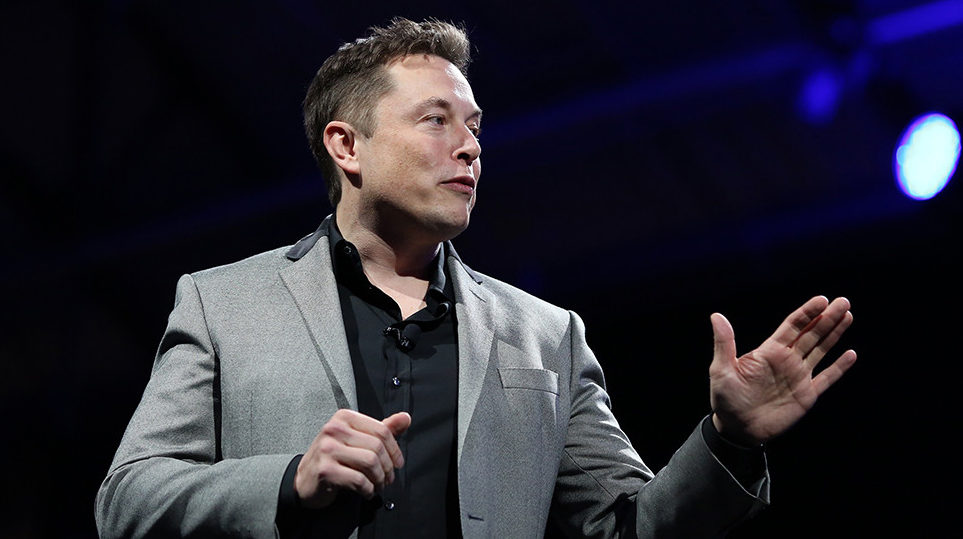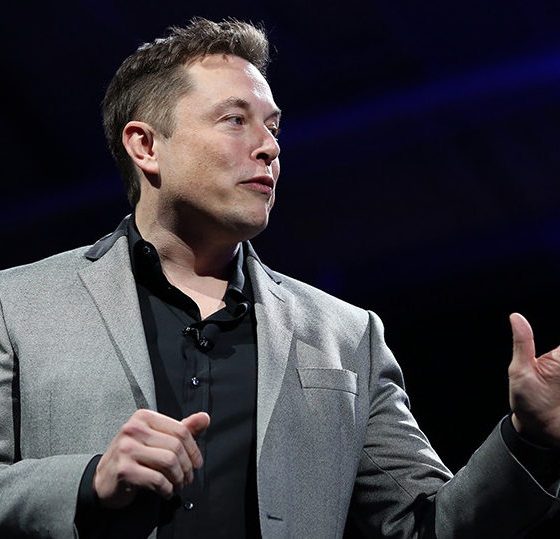

Investor's Corner
Elon Musk and SEC get another week to resolve dispute over Tesla production tweet
Elon Musk and the Securities and Exchange Commission have received a one-week extension from US Judge Alison Nathan, giving them more time to settle an ongoing dispute over the Tesla CEO’s Twitter use. The extension came on the heels of a joint submission to the federal judge, who initially gave Musk and the SEC until April 18 to reach an agreement.
“While we have not reached an agreement, counsel for the SEC, Mr. Musk, and counsel for Tesla met and conferred for over an hour by telephone earlier this week and are continuing to discuss a potential resolution. Because our discussions are ongoing, we respectfully request to provide the Court with another joint submission on or before April 25, 2019, indicating whether we have reached an agreement in principle,” the request read.
Elon Musk and the SEC’s ongoing dispute was caused by a tweet posted on February 19 which noted that the electric car maker will produce around 500K electric cars this year, a figure that the CEO previously mentioned in the Q4 2018 earnings call. Musk eventually issued a follow-up tweet, stating that the 500k figure referred to an annualized production rate. The SEC promptly jumped on Musk’s tweet, asking a US court to hold the Tesla CEO in contempt over the alleged violation of his settlement with the agency, which required any social media posts with material information to be reviewed before they are uploaded.
Elon Musk and his legal team faced off with the SEC earlier this month, where both sides presented their case to the US judge. The SEC’s attorney, Cheryl Crumpton, argued that Musk had “recklessly tweeted out information that has no basis in fact.” The SEC lawyer also admonished Tesla for allegedly failing to control the conduct of its CEO. As punishment for his alleged violation, the SEC called on the court to give Musk an escalating series of fines. Crumpton also stated that Musk should be ordered to report monthly on his compliance with the terms of his settlement.
Musk’s legal team, represented by veteran lawyer John Hueston, argued that the Tesla CEO did not violate the terms of his settlement because the February 19 tweet contained information that had been public since the company’s Q4 2018 earnings call. The lawyer added that under the terms of the settlement, Musk has the discretion to decide what is material information and what is not. Hueston also argued that the SEC should have attempted to settle its dispute with Musk before it asked the court to hold the CEO in contempt. “What the SEC should have done was approach in good faith and try to work things out,” he said.
After hearing the arguments from the SEC and Musk’s legal team, Judge Nathan ordered the two parties to “take a deep breath, put on your reasonableness pants” and work out a solution by April 18. If the parties are unable to resolve their conflicts on their own, Nathan noted that Musk’s legal team and the SEC will hear from her. Musk, for his part, noted in a statement after the hearing that he was “very impressed with Judge Nathan’s analysis.”

Investor's Corner
Tesla stock closes at all-time high on heels of Robotaxi progress

Tesla stock (NASDAQ: TSLA) closed at an all-time high on Tuesday, jumping over 3 percent during the day and finishing at $489.88.
The price beats the previous record close, which was $479.86.
Shares have had a crazy year, dipping more than 40 percent from the start of the year. The stock then started to recover once again around late April, when its price started to climb back up from the low $200 level.
This week, Tesla started to climb toward its highest levels ever, as it was revealed on Sunday that the company was testing driverless Robotaxis in Austin. The spike in value pushed the company’s valuation to $1.63 trillion.
Tesla Robotaxi goes driverless as Musk confirms Safety Monitor removal testing
It is the seventh-most valuable company on the market currently, trailing Nvidia, Apple, Alphabet (Google), Microsoft, Amazon, and Meta.
Shares closed up $14.57 today, up over 3 percent.
The stock has gone through a lot this year, as previously mentioned. Shares tumbled in Q1 due to CEO Elon Musk’s involvement with the Department of Government Efficiency (DOGE), which pulled his attention away from his companies and left a major overhang on their valuations.
However, things started to rebound halfway through the year, and as the government started to phase out the $7,500 tax credit, demand spiked as consumers tried to take advantage of it.
Q3 deliveries were the highest in company history, and Tesla responded to the loss of the tax credit with the launch of the Model 3 and Model Y Standard.
Additionally, analysts have announced high expectations this week for the company on Wall Street as Robotaxi continues to be the focus. With autonomy within Tesla’s sights, things are moving in the direction of Robotaxi being a major catalyst for growth on the Street in the coming year.
Elon Musk
Tesla needs to come through on this one Robotaxi metric, analyst says
“We think the key focus from here will be how fast Tesla can scale driverless operations (including if Tesla’s approach to software/hardware allows it to scale significantly faster than competitors, as the company has argued), and on profitability.”

Tesla needs to come through on this one Robotaxi metric, Mark Delaney of Goldman Sachs says.
Tesla is in the process of rolling out its Robotaxi platform to areas outside of Austin and the California Bay Area. It has plans to launch in five additional cities, including Houston, Dallas, Miami, Las Vegas, and Phoenix.
However, the company’s expansion is not what the focus needs to be, according to Delaney. It’s the speed of deployment.
The analyst said:
“We think the key focus from here will be how fast Tesla can scale driverless operations (including if Tesla’s approach to software/hardware allows it to scale significantly faster than competitors, as the company has argued), and on profitability.”
Profitability will come as the Robotaxi fleet expands. Making that money will be dependent on when Tesla can initiate rides in more areas, giving more customers access to the program.
There are some additional things that the company needs to make happen ahead of the major Robotaxi expansion, one of those things is launching driverless rides in Austin, the first city in which it launched the program.
This week, Tesla started testing driverless Robotaxi rides in Austin, as two different Model Y units were spotted with no occupants, a huge step in the company’s plans for the ride-sharing platform.
Tesla Robotaxi goes driverless as Musk confirms Safety Monitor removal testing
CEO Elon Musk has been hoping to remove Safety Monitors from Robotaxis in Austin for several months, first mentioning the plan to have them out by the end of 2025 in September. He confirmed on Sunday that Tesla had officially removed vehicle occupants and started testing truly unsupervised rides.
Although Safety Monitors in Austin have been sitting in the passenger’s seat, they have still had the ability to override things in case of an emergency. After all, the ultimate goal was safety and avoiding any accidents or injuries.
Goldman Sachs reiterated its ‘Neutral’ rating and its $400 price target. Delaney said, “Tesla is making progress with its autonomous technology,” and recent developments make it evident that this is true.
Investor's Corner
Tesla gets bold Robotaxi prediction from Wall Street firm
Last week, Andrew Percoco took over Tesla analysis for Morgan Stanley from Adam Jonas, who covered the stock for years. Percoco seems to be less optimistic and bullish on Tesla shares, while still being fair and balanced in his analysis.

Tesla (NASDAQ: TSLA) received a bold Robotaxi prediction from Morgan Stanley, which anticipates a dramatic increase in the size of the company’s autonomous ride-hailing suite in the coming years.
Last week, Andrew Percoco took over Tesla analysis for Morgan Stanley from Adam Jonas, who covered the stock for years. Percoco seems to be less optimistic and bullish on Tesla shares, while still being fair and balanced in his analysis.
Percoco dug into the Robotaxi fleet and its expansion in the coming years in his latest note, released on Tuesday. The firm expects Tesla to increase the Robotaxi fleet size to 1,000 vehicles in 2026. However, that’s small-scale compared to what they expect from Tesla in a decade.
Tesla expands Robotaxi app access once again, this time on a global scale
By 2035, Morgan Stanley believes there will be one million Robotaxis on the road across multiple cities, a major jump and a considerable fleet size. We assume this means the fleet of vehicles Tesla will operate internally, and not including passenger-owned vehicles that could be added through software updates.
He also listed three specific catalysts that investors should pay attention to, as these will represent the company being on track to achieve its Robotaxi dreams:
- Opening Robotaxi to the public without a Safety Monitor. Timing is unclear, but it appears that Tesla is getting closer by the day.
- Improvement in safety metrics without the Safety Monitor. Tesla’s ability to improve its safety metrics as it scales miles driven without the Safety Monitor is imperative as it looks to scale in new states and cities in 2026.
- Cybercab start of production, targeted for April 2026. Tesla’s Cybercab is a purpose-built vehicle (no steering wheel or pedals, only two seats) that is expected to be produced through its state-of-the-art unboxed manufacturing process, offering further cost reductions and thus accelerating adoption over time.
Robotaxi stands to be one of Tesla’s most significant revenue contributors, especially as the company plans to continue expanding its ride-hailing service across the world in the coming years.
Its current deployment strategy is controlled and conservative to avoid any drastic and potentially program-ruining incidents.
So far, the program, which is active in Austin and the California Bay Area, has been widely successful.








